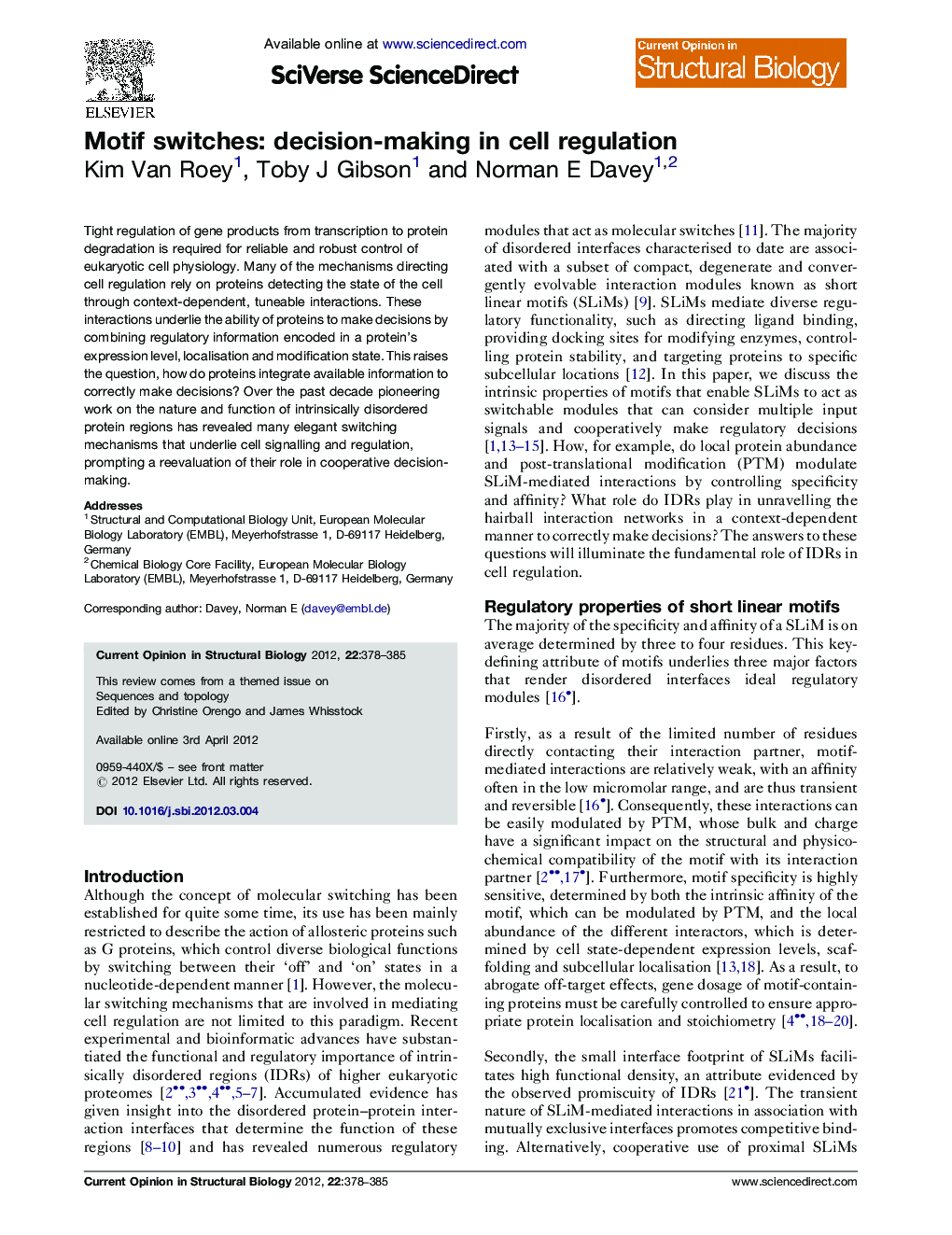| Article ID | Journal | Published Year | Pages | File Type |
|---|---|---|---|---|
| 1979091 | Current Opinion in Structural Biology | 2012 | 8 Pages |
Tight regulation of gene products from transcription to protein degradation is required for reliable and robust control of eukaryotic cell physiology. Many of the mechanisms directing cell regulation rely on proteins detecting the state of the cell through context-dependent, tuneable interactions. These interactions underlie the ability of proteins to make decisions by combining regulatory information encoded in a protein's expression level, localisation and modification state. This raises the question, how do proteins integrate available information to correctly make decisions? Over the past decade pioneering work on the nature and function of intrinsically disordered protein regions has revealed many elegant switching mechanisms that underlie cell signalling and regulation, prompting a reevaluation of their role in cooperative decision-making.
► The functionality of IDRs is in part determined by short linear motifs. ► The intrinsic properties of SLiMs enable them to mediate molecular switching. ► Multi-SLiM switches act cooperatively and competitively to mediate decision-making. ► Different motif-based switching mechanisms evolved separately on multiple occasions.
